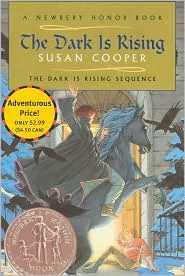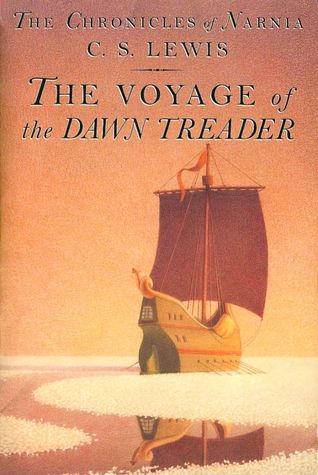
Naomi Kinsman is the author of the From Sadie’s Sketchbook series, and founder of Society of Young Inklings, an organization dedicated to unleashing the power of young writer’s stories through classes, one on one mentorships and publishing opportunities. The Inklings offers opportunities for writers nationwide, and can be explored at www.younginklings.com. Naomi blogs at www.naomikinsman.com and at www.sadies-sketchbook.com.
Recently, at a school visit, a parent asked me if I had children. When I answered that I do not, she cocked her head and gave me a puzzled look. “Why do you write for kids, then?”
The question has stuck with me, not because I haven’t been asked this exact question before, but because the question came from such a unique perspective. Usually, I’m asked why I write books by a middle-grade book enthusiast who isn’t puzzled by my passion. My standard answer has to do with falling in love with books when I was six and seven and eight, and that love spurring me on to write those kinds of books myself. However, looking at myself through this parent’s eyes, I see that I am a relatively strange type of bird, a Peter Pan of sorts. I do write books for children, but not for my own children, unless you count the hoards of young writers I work with through my organization, Society of Young Inklings. Even more than for them, though, I write my books for the child reader in me. As far as I can tell, in conversations with my many writer-friends, most writers of books for young people feel the same. We all seem to write, ultimately, for themselves. We don’t think of a specific young person, or our own children, or even a classroom of children. We think: What book did I want or need when I was growing up?
And thus, there’s my list of key middle grade books, the ones I engaged with on the deep emotional level of the child reader. I promise, my list is coming, but I do have a side note here.
In another recent conversation with writers, we talked about the books we read as children and didn’t return to until we were adults. Not the books we read casually, but the ones we read voraciously, over and over, not quite sure why we had to keep reading them. One of my friends had gone back to read one of these well-traveled books and realized the book was about the very challenges he faced as a child. But as a child he had no idea. As a child, he thought of the book as an amazing adventure, thrilling, captivating, completely and utterly perfect. He wasn’t consciously aware of the similarities between the child character and himself.
This magic is the reason I both write, and read, middle grade books. The best ones have such a deep “aboutness,” the kind of connection that plugs straight into our authentic hearts. At the same time, these are Stories with a capital “S.” These books thrill and excite, allow us to take vicarious risks, try new things, experience new places, and slip into someone’s mind who may be our polar opposite.
Here’s a list of six books I read and re-read and re-read, and which I’d highly recommend to anyone looking for some middle grade classics:
The Westing Game by Ellen Raskin
The puzzle in this book was what made me pick it up and start to read it, but the fact that the character who figured out the mystery was such a surprise, and someone I could relate to... well that’s what had me reading this one over and over.
A Ring of Endless Light by Madeleine L’Engle
The line between real and impossible is so faint, and even more so, I think, in times of grief. Maybe that is why in this book, where children swim with in the sea with dolphins, and possibly even communicate with them, touches such a chord with me as a reader. This book is everything I love from a middle grade book: an adventure, with some danger, but not an overwhelming amount and real-life, both the light and darkness.
Harriet the Spy by Louise Fitzhugh
Harriet isn’t the nicest of characters, and I think that’s why she appealed to me so much as a young reader. Most of the characters I read about were so very good. And while I wanted to be deep-down good, the way they were, I knew I wasn’t always. Watching Harriet, who made really poor decisions sometimes, gave me hope, and without ever “teaching,” helped me discover for myself what friendship sometimes requires.
Five Children and It by E. Nesbit
Five Children and It challenges the perfectionist in me. The children make wishes, meaning well, but even the tiniest of mistakes in their wording results in the hugest of difficulties. One can’t help but laugh at the trouble as it piles up in this book and the children’s joyful exploration as they seek solutions.
The Dark is Rising by Susan Cooper
When I was small, the nameless darkness in this book and the way the characters are fated to fight against it gave shape and texture and layered understanding to my own developing questions, such as “how can people do such terrible things?” No simple answer is offered, and yet hope can’t help but rise as the characters fight back courageously.
Voyage of the Dawn Treader by C.S. Lewis
There is something so ridiculous about a Dufflepud, who is invisible and one-footed, and always agrees with all the other Dufflepuds. Or a boy, who is so selfish that he turns into a dragon. This story, a grand sailing adventure, would need no deep themes to keep a reader turning pages. Yet, on page after page, a reader can’t help but see herself over and over. One wonders, if I, like Lucy, found a book in which I could read about what others thought of me, would I read it?
To close, I’ll leave you with a list of books that I think I might have read and re-read, had I discovered them as a child. I’d highly recommend any of these, too.
- The Wall and the Wing by Laura Ruby
- The Real Boy by Anne Ursu
- The Thief Lord by Cornelia Funke
- Three Times Lucky by Shiela Turnage
- Chasing Vermeer by Blue Balliett
- The Wanderer by Sharon Creech
Happy Reading to all,
Naomi






It amazes me how many people love DAWN TREADER best. Me too!
ReplyDelete